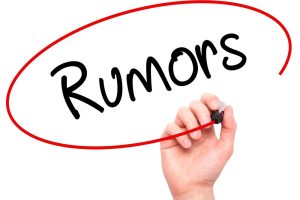- A certain real estate agent in Falcon sprained his ankle skydiving.
- The Gazette stole our thunder when they stated, in a Sept. 26 article, that newspapers usually don’t report rumors. Well, this newspaper does. But The Gazette decided to jump on board with the concept and reported the following: Wal-Mart is coming to Falcon. No one knows for sure.
- We heard John Elway is opening a steak house in Calhan.
- When George Bush was in Colorado Springs a couple of weeks ago, we heard he said that Falcon voters could determine the presidential election.
“Barter, Bits and Dollars: The Money of Colonial America” debuted in OctoberEarly American daily life challenged even the heartiest of settlers with its unfamiliar environment inhabited by exotic creatures, strange plants and untamed terrain.At its public debut on Oct. 15 at 4:30 p.m., the American Numismatic Association and the Money Museum in Colorado Springs unveiled a snapshot of life in those early days from a numismatic perspective. “Most settlers came from towns and villages where commerce was lively and citizens specialized in various trades,” said Doug Mudd, Money Museum curator and museum director. “Money was the grease that kept the machinery of European civilization working. That’s what “Barter, Bits and Dollars” is all about.”Featured is an array of coins and paper money as well as tokens first used for exchange or barter. In addition, the museum features displays of European coins and currency used between the arrival of Columbus in the 15th century and the American Revolution of 1776.Some items include purported “pirate treasure” such as Spanish doubloons and “pieces of eight.” Specific rarities on display include:
- First silver dollar of the New World, commissioned by King Carlos of Spain in 1535. The first mint of the Americas was established by Spain in central Mexico near today’s Mexico City. In addition, the 8-reales (pronounced “ray-als”) or “pieces of eight” coins were produced here.
- 1651 Great Britain shilling: On its face or the “obverse,” is the Shield of St. George surrounded by palm and laurel leaves. The Commonwealth of England minted this silver coin.
- 1652 Massachusetts Oak Tree shilling, which on its face or “obverse” depicts an oak tree image, used in part to make counterfeiting difficult. The silver coin has been part of the American Numismatic Association’s collection since 1976.
- A March 5, 1776, five shilling, four-pence note representing two-thirds of a dollar. Bearing the coat of arms of New York City, the paper note reads, “This Bill Shall Pass current in all Payments in this Colony.” This early currency was printed only on one side and was created by a “Resolution of the Provincial Congress of New York.”




